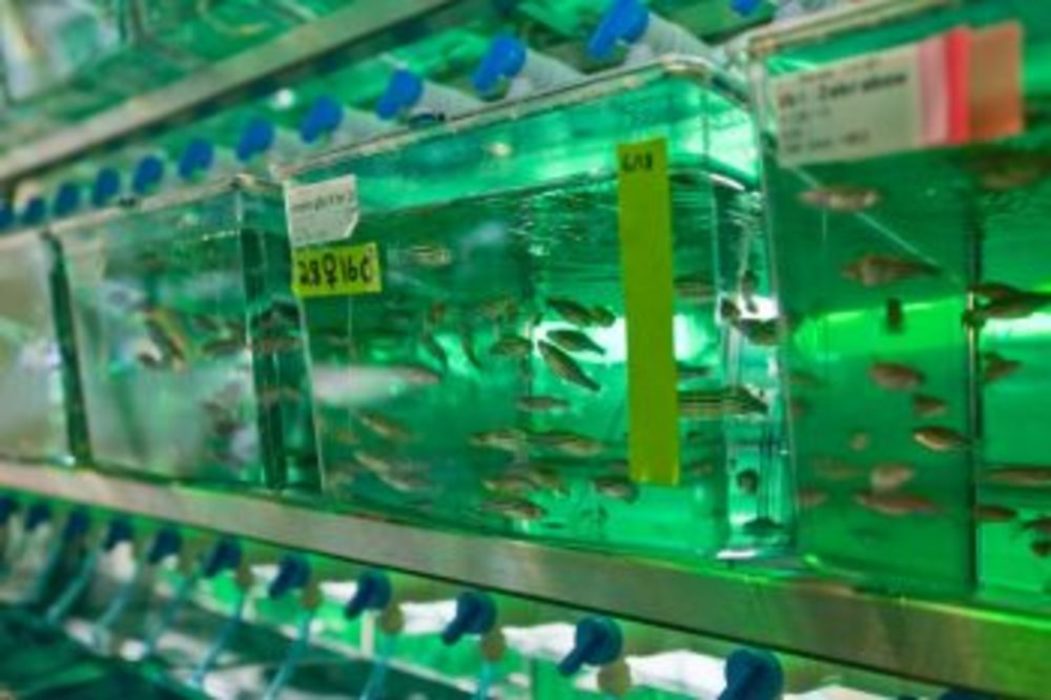
More than five years ago, when Dr. Lisa Maves, a scientist at Seattle Children’s Research Institute, first started using CRISPR to make genetic alterations in zebrafish, she saw the potential for the minnow-sized fish to help doctors understand how genetic mutations contribute to a child’s condition.
“Essentially, we set out to make a patient’s fish,” Maves said. “The zebrafish has a genome that is remarkably similar to humans. As new gene editing technology was just becoming available, I wondered whether we could use this technology to create a fish that mimicked the complex genetic conditions we see in children.” Maves hypothesized that genetically engineering the fish in this manner would help uncover how different genes affect development and cause disease. “Physicians will often use DNA sequencing to better understand the genetic basis of a patient’s condition,” Maves said. “Even with this information, it’s difficult to say which DNA mutations are really having effects. The zebrafish could hold the key to showing us how mutations contribute to disease.” Using zebrafish to learn about human heart defects
To test her theory, Maves and colleagues in the research institute’s Center for Developmental Biology and Regenerative Medicine used CRISPR to introduce a genetic variant previously identified in children with congenital heart defects (CHDs) into zebrafish embryos. Then, the scientists closely monitored the developing fish in search of clues that the genetic change affected the development of the heart. Largely carried out by Hank Farr, a senior research associate in the Maves Lab, with help from University of Washington undergraduate students, Kimia Imani and Darren Pouv, the culmination of their work published today in Disease Models and Mechanisms.
Appearing alongside two other papers also contributing significant advances in using CRISPR in zebrafish disease models, the paper from Seattle Children’s offers new insight into the role this DNA variant plays in the formation of CHDs and provides the first example of using precision gene editing in zebrafish to demonstrate the function of a genetic mutation of previously unknown significance.
“We knew this DNA variant could occur in some patients with CHDs, but we didn’t understand how it contributes to their heart defects,” Maves said. “The fish engineered with this same DNA variant revealed how this variant potentially influences other genes involved in heart defects and may contribute to the severity of CHDs in humans.” Findings to help understand other complex genetic conditions
As a next step, Maves plans to use this approach to test other genes documented by Seattle Children’s Heart Center. She hopes this collaboration between her lab and the clinicians caring for patients will bring even greater understanding to the genetics of CHDs, which occur in about 1% of babies born in the U.S.
“We currently understand only about one-third of the genetic causes of CHDs,” Maves said. “It is likely that the remaining two-thirds are due to complex effects involving multiple genes. This makes it difficult to design genetic testing for CHD. We think that our work will help generate an even greater understanding of the genetics of CHDs, and hopefully in the future our approaches will help families have a better understanding of the genetic basis for their child’s condition.” Beyond CHDs, the same methods could help researchers studying a range of other complex congenital disorders. “An advantage of using zebrafish is that we can test multiple different mutations at the same time,” she said. “This more closely resembles complex disease in humans. That complexity gives us the ability to examine how several genetic changes may work together to exacerbate the genetic conditions we see in children.” ‘It’s my dream to someday build a fish for a patient’ While their study used several techniques to optimize the delivery of the desired genetic changes into the fish, Maves said there is a need to continue to improve its efficiency. Another drawback, she notes is that the process is lengthy. Currently, it can take several months to generate and screen the fish needed to study a specific mutation. Maves envisions someday shortening the process so that they could give a family more information about their child’s condition in as little as a week. “The more we can use this approach in fish to understand genetic information from humans, the closer we’ll get to an immediate impact for families,” Maves said. “It’s my dream to someday build a fish for a patient that will help a family make decisions about their child or help a physician better guide treatments.” Link to original published article.


